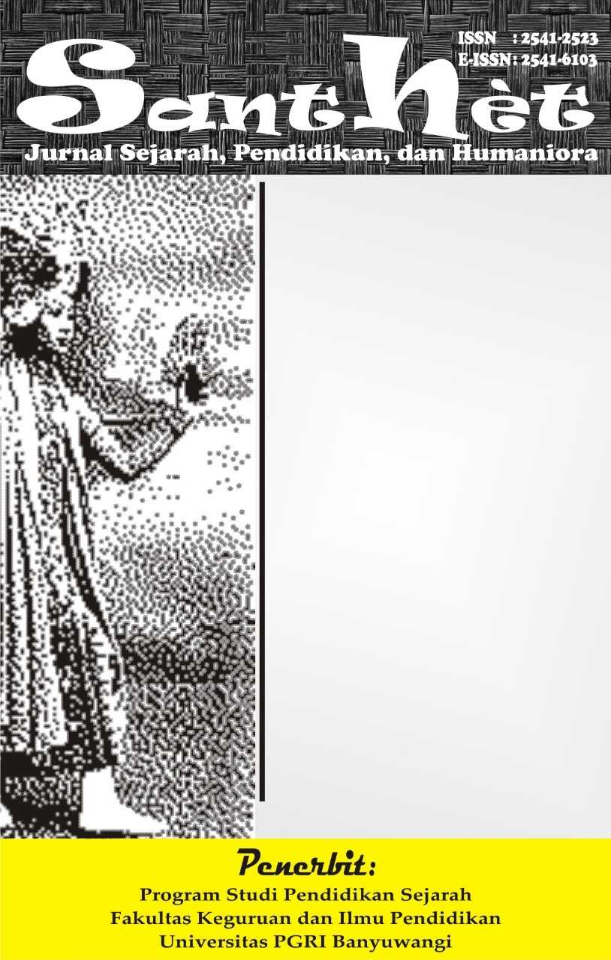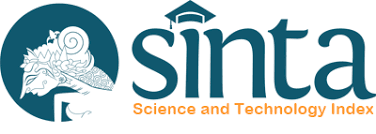Improving Students Learning Motivation trough Group Guidance Services
DOI:
https://doi.org/10.36526/santhet.v8i2.4165Keywords:
Learning Motivation, group guidance, studentAbstract
The purpose of the study was to determine the significance of increasing students' learning motivation through the provision of group guidance services to students of SMAN 3 Baubau. This research used quantitative method, with pre-experimental design using one group pretest-posttest design. This research was conducted at SMAN 3 Baubau with the research subject of class XI students who have low learning motivation category. The population in this study totalled 48 students. Sampling through nonprobability sampling technique with the technique of determining the number of samples through purposive sampling. The number of research samples is 8 students who have low learning motivation. The posttest results consisted of 5 students with a percentage of 62% in the medium category and 3 students with a percentage of 38% in the high category and there were no low category students. In the Ranks Uiji Wilcoxon Signed-Ranks data shows that negative ranks or negative differences between pre-test and posttest results are 0 in the N value, Mean Rank and Sum of Ranks. On positive ranks the results of the pres test posttest show 8 on the n value, mean ranks or an average increase of 4.50 and sum of ranks with a value of 36.00. While the level of similarity in the pretest and post test scores is 0, where the value of 0 is said to be no similarity in the pres test and posttest scores. It can be concluded that group guidance services are effective in increasing students’ learning motivation.
References
Agustina, E., Yuliansyah, M., & Auliah, N. (2022). Peningkatan Motivasi Belajar Siswa Melalui Teknik Cinema Therapy di Era New Normal pada Kelas X di SMKN 3 Amuntai. Jurnal Inovasi Penelitian (JIP), 2(10), 3169–3174.
Ariani, N., Masruro, Z., Saragih, S., & Hasibuan, R. (2022). Buku Ajar Belajar dan Pembelajaran (1st ed.). Penerbit Widina Bhakti Persada.
Azzahra. (2022). Meningkatkan Motivasi Belajar Anak Pada Keluarga Yang Mengalami Perceraian (Broken Home). ABDISOSHUM: Jurnal Pengabdian Masyarakat Bidang Sosial dan Humaniora, 1(1), 36–42. https://doi.org/10.55123/abdisoshum.v1i1.491
Ducan, T., Pintrich, Paul, Smith, David, Mckeachie, W. (2015). Motivated Strategies for Learning Questionnaire (MSLQ) Manual. https://doi.org/10.13140/RG.2.1.2547.6968.
POP BK SMA. (2016). Panduan Operasional Penyelenggaraan Bimbingan dan Konseling Sekolah Menengah Atas. Kementerian Pendidikan dan Kebudayaan.
Fitriani, R. (2019). Layanan Bimbingan Kelompok Teknik Modelling Simbolik untuk Meningkatkan Kemandirian Belajar Siswa. EMPATI-Jurnal Bimbingan dan Konseling, 6(2). https://doi.org/10.26877/empati.v6i2.4280
Hartanti, J. (2022). Bimbingan Kelompok. Penerbit Duta Sablon.
Saleh, N. S., Taib, S. A., Sa’adan, N., Noorezam, M., Mohammad Iliyas, S. M., Jenal, N., & Rahmat, N. H. (2023). Learning Motivation: A Correlational Study between Value and Expectancy Components. International Journal of Academic Research in Business and Social Sciences, 13(6), Pages 678-694. https://doi.org/10.6007/IJARBSS/v13-i6/17112
Slameto. (2015). Belajar dan Faktor-faktor yang Mempengaruhinya. Jakarta: Rineka Cipta.
Sobirin, S. (2019). Meningkatkan Motivasi Belajar Siswa Melalui Bimbingan Kelompok pada SMP. Jurnal Konseling Gusjigang, 5(1), 1–8.
Soyogul, Cihan Emine. (2015). Students 'Motivational Beliefs and Learning Strategies: an Investigation of the Scholar Development Program.





























